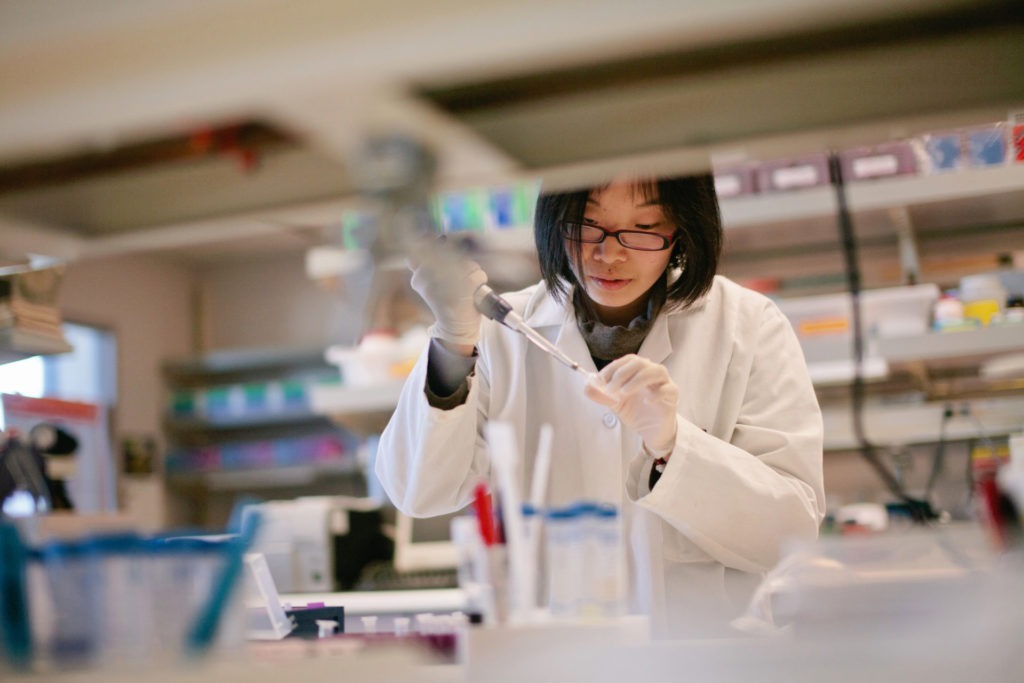There’s long been a stubborn inventor gender gap at play and that gap has and is continuing to significantly hamper women’s health.
New research out of the US this month by Harvard Business Review finds that biomedical inventions in the US that are created by women are 35 per cent more likely to benefit women’s health than those that are created by men.
The problem is that just 4 per cent of biomedical patented inventions are created by all female teams which, according to the researchers, means that there have been thousands of missed opportunities for inventions that focus on women’s health.
Their research “Patents by women focus more on women’s health, but few women get to invent” (a headline which sums the findings up neatly) is yet another reminder on the need to ensure women and girls can successfully pursue and thrive in STEMM related fields.
These researchers point to the example of MIT professor Linda Griffith, who is currently examining the biological mechanisms that underly endometriosis, a condition that has for too long gone underdiagnosed and overlooked despite the one in ten women it impacts.
Professor Griffith has also recently been featured in The New York Times for the focus she’s applying to endometriosis. She spoke of wanting to redefine the “women’s disease” status that it currently has, to be a research issue — or more specifically an “MIT research issue” referring to where she works. Professor Griffith has personal experience with endometriosis and suffered from the pain for three decades before finally receiving a diagnosis.
The HBR researchers, including Rem Koning, Sampsa Samila and John-Paul Ferguson, note that with just 12.8 per cent of the inventors receiving patents in the US in 2020 being female, conditions like endometriosis will continue to fail to get the real look-in they require — especially, as these researchers also find, men have typically ignored such conditions.
The researchers analyzed summary text from more than 440,000 medical patents to determine their findings via machine learning. From there, they found that when the research teams behind such patents were completely or primarily made up of men, then their patents were more likely to focus on the medical needs of women.
And this has been a massive problem historically, that has contibuted to the massive gap in addressing women’s healthcare needs out there today.
For one, the fact that just 12.8 per cent of patents in 2020 are going to female inventors is dire — given the progress we want to believe has been made in opportunities for women in STEMM fields. In 1976, the figure was just 6.3 per cent.
Looking historically, the researchers found that from 1976 to 2010, male-dominated teams produced hundreds of more inventions that focused on the health needs of men, than those who focused on the health needs of women, in 34 of those 35 years. And can you guess what areas of focus got more attention than issues like “menopause”? Yep, inventions with keywords like “erectile” and “prostate”.
As for those teams dominated by women during the 35 years studied, they were more likely to be focused on women’s health needs. The researchers saw conditions commonly addressed as including areas like breast cancer and postpartum preeclampsia.
They also found that female inventors were more likely to separately examine how their work impacts men and women differently — differences that again have been ignored throughout modern history.
The good news is that in the US, the gender gap is closing. There were significantly more female-focused inventions in the three to five years up until 2010, according to the researchers.
We’ve also seen a shift in how women-led startups that focus on women’s health are being funded and celebrated. Although the tiny percentage of investment female entrepreneurs are receiving when compared to their male counterparts is an indication again that there’s a long way to go.
We have serious catching up to do in addressing women’s health needs. It should be expected that the female focus should take a dominant portion of attention when it comes to medical-related inventions, given the inattention it’s suffered for so long.


